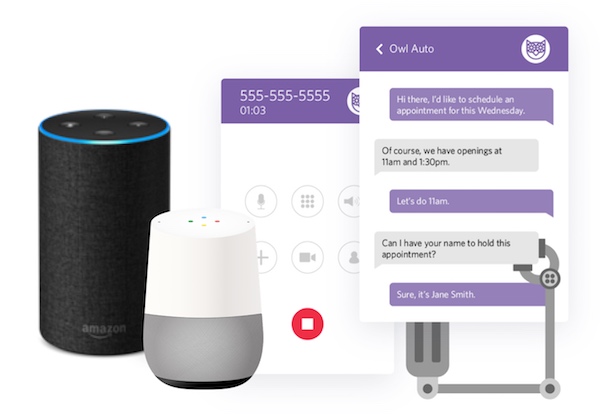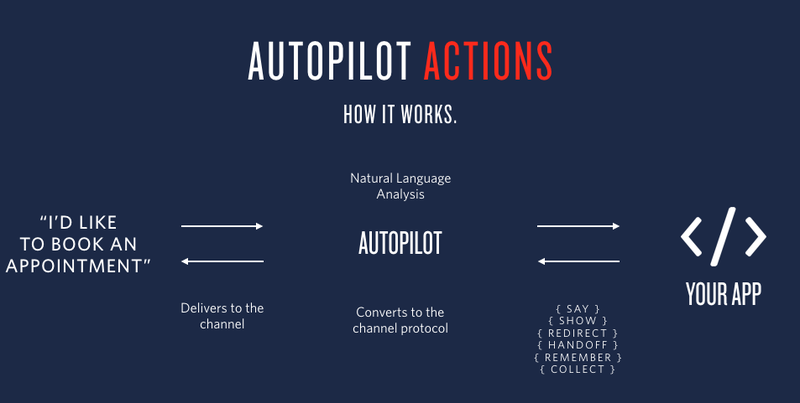Twilio Autopilot Brings Chat, SMS and Phone Call Support to Alexa and Google Assistant

Twilio today announced Autopilot, a new product that the company says will streamline the development of customized, AI-based bots for customer self-service use cases. A key development is that Autopilot will make it easier to integrate chat, SMS and phone connectivity with Alexa skills and Google Assistant Actions. The company stressed that it is designed to “work alongside contact center agents, [where] Autopilot takes care of initial information gathering and then passes the context of that interaction to an agent when human touch is required.” In an interview with Voicebot, Nico Acosta, director of product and engineering at Twilio said:
“Contact centers have been around for ever and ever, but they are a significant cost to companies. Autopilot is a conversational AI platform to help companies service customers at scale…The way to scale customer engagements is a combination of self-service and contact center agents. Leveraging AI where it is best and people where they are best and having a solution that can bridge those two worlds is what is needed…The hand-off action escalates to agents when self-service doesn’t do it. Hand-off actions transfer an Autopilot session to an agent and passes along all of the information that has already been collected in the conversation.”
Core Components of Autopilot

Acosta said there are three primary components of Autopilot. First, there is an natural language understanding (NLU) framework that makes it easy for developers to build a custom model. This will enable the AI to better understand use case or industry-specific nomenclature or grammar. Second, there is a Conversational Application Platform which is referred to as Style Sheets. This is a declarative API that is responsible for dialogue and state management as well as error handling. This can be used to control a bot’s tone and language as well as validation behaviors.
Finally, there is an Omni-channel Hub that translates JSON into protocols for the selected communications channels. The hand-off action along with redirects, data collection and instructions for what the channels should communicate are part of this component. Twilio also has a separate programmable voice solution which can be used for automated speech recognition (ASR).
Examples Use Cases
Acosta offered two example use cases of how Autopilot could be employed in the real world. “A customer has an insurance claim and wants to know the status of the claim. The could say, ‘Alexa ask Mega Insurance the status of my claim.’ Auto-pilot offers hooks to the Mega Insurance backend [systems] to fetch the claim and translate that back to Alexa. You can do the same with Google Assistant without having to change one line of code.”
Twilio is not announcing any customers of Autopilot, but did say that “roughly” 100 had worked with it over the past year through the company’s beta program. Acosta said a travel industry company used it within their IVR for intent classification to handle some common requests such as baggage status. He offered that once implemented, Autopilot could become a Google Action, Alexa skill or SMS service allowing consumers to ask for baggage status through multiple channels.
Making Customer Support Accessible Through Voice Assistants
As soon as smart speakers started showing up in kitchens and family rooms, may people wondered when they would be able to contact a customer service center through them. The reasoning was simple. If I am using an Alexa skill from a brand and I have a question about my product or an issue I need to resolve, why wouldn’t I just continue my conversation from the skill directly to a contact center? That means the user doesn’t have to go on the web and look up contact information. They could simply speak to the devices they already had in the room.
Twilio Autopilot is designed to make that process easier for Alexa skill and Google Assistant Action builders. And, the conversation will start with an AI-based bot which means that many of the interactions will be handled through self-service alone. Where human interaction is needed, there is a method to transition from the bot interaction to the human agent.
Twilio Autopilot Pricing
Communications tools are not free and Twilio is a public company that earned $150 million in revenue in the June quarter of 2018. Messaging, Chat, Alexa and Google Assistant communications will all be priced at 1/10th of a cent per turn in a conversation. For messaging and chat, that is per message and for Alexa and Google Assistant it is per utterance. This could be an issue in messaging where users often use several messages in short bursts to ask a single question. Voice connections are priced at 4-cents per minute.

You can read more about Autopilot here. Twilio users can access the Autopilot beta today through the Twilio Console. Acosta commented that other voice assistants beyond Alexa and Google Assistant will be supported in the future.
Follow @bretkinsella Follow @voicebotai
Only 5% of Alexa Skills Have More Than 8 Reviews and 65% of Skills with 5-Stars Have Only One Review
Google Assistant News Roundup From September and October 2018








